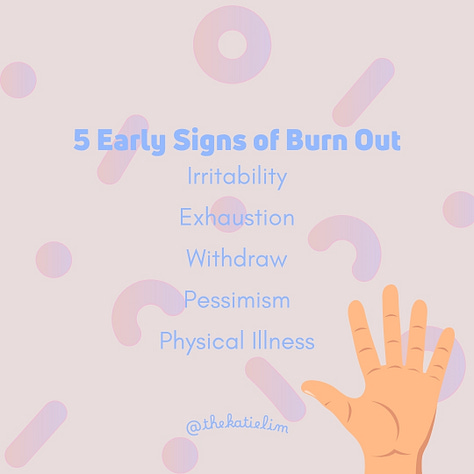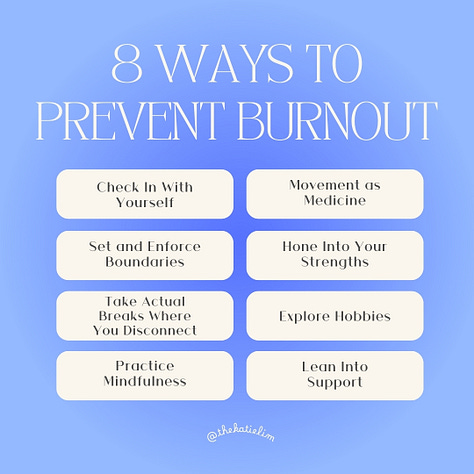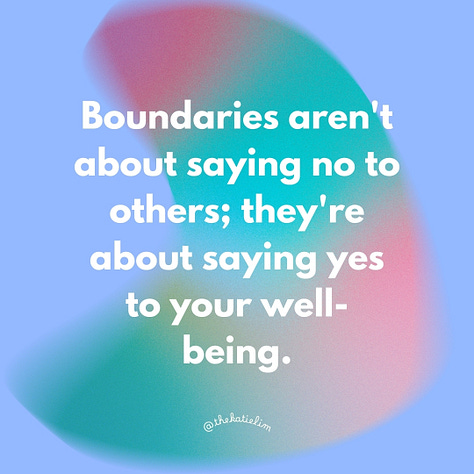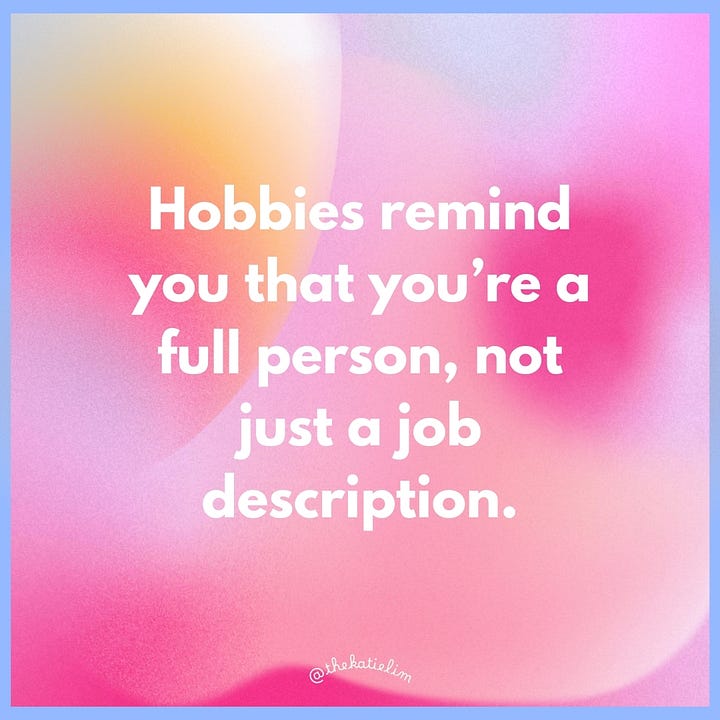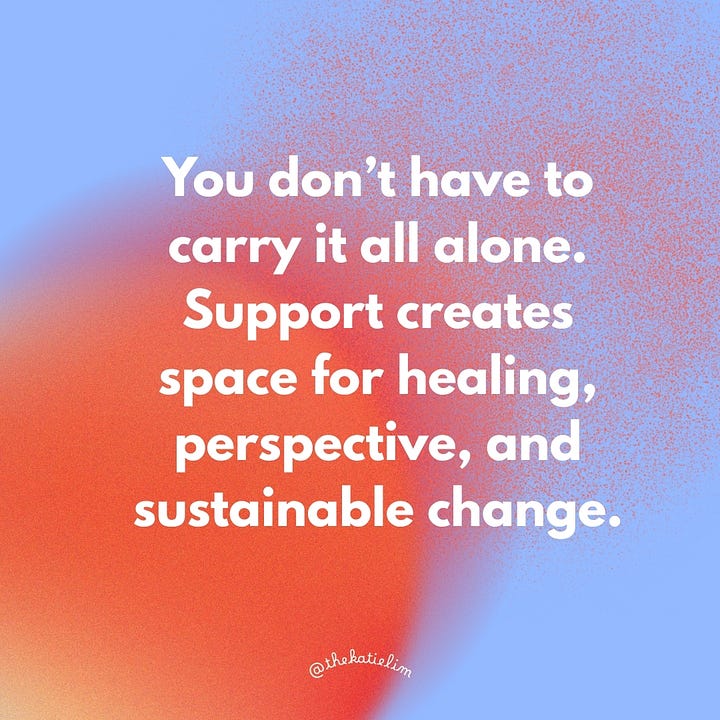How to Catch Burnout Early and Bounce Back Fast
8 No-Fluff Strategies to Protect Your Peace, Energy, and Ambition
A few months before I burned out completely, I kept telling myself I was just “in a busy season.”
Irritable? Just tired.
Withdrawing? Just overwhelmed.
Getting sick more often? Just a coincidence.
I ignored every sign my body and brain were sending me until I couldn’t anymore. The result? I completely crashed out and quit my job with no backup plan in a questionable job market.
Let’s not let it get that far for you. Keep reading for how to intervene early, before burnout calls the shots.
In my last post, I shared five early signs of burnout:
Irritability
Exhaustion
Withdrawal
Pessimism
Physical illness
If any of those feel familiar, this post is for you. The key to avoiding full-on collapse isn’t a long weekend or an early Friday. It’s recognizing the signs and choosing to do something about them while you still can.
Below are 8 ways to catch burnout in its tracks and what that looks like practically
Check In With Yourself
Burnout often begins when you're too busy to notice how off you feel. A quick self-audit creates the awareness you need to course-correct. Perform this as mental health “maintenance” when you begin to experience symptoms of burnout.
Ask yourself: What’s draining me most right now?
Track how you feel at the beginning and end of your workday for a week.
Name 3 emotions you’re currently feeling.
Journal freely for 5–10 minutes about what feels heavy.
Set and Enforce Boundaries
Without clear boundaries, burnout becomes inevitable. Boundaries aren't about saying no to others; they're about saying yes to your well-being. Not everyone will respect your boundaries, which is why learning to enforce them is critical.
Schedule non-negotiable rest time in your calendar.
Practice saying, “I can’t take that on right now, but here’s what I can do” OR “I can do that but will have to de-prioritize other tasks.”
Mute email and chat notifications during non-work hours.
Write out your top 3 priorities this week and view every other task as secondary.
Set a designated sign-off time and stick to it (even if no one else does).
Take Actual Breaks Where You Disconnect
A break isn’t a break if you’re checking emails or work chats. Micro-recovery throughout the day protects your nervous system and helps prevent long-term exhaustion.
Set your calendar as “unavailable” during lunch or personal appointments. Enforce boundaries by letting your team know when they will not be able to reach you.
Allow yourself 10 minutes every 90 minutes to walk, stretch, focus on your breathing, or other calming exercises.
Use your PTO. Leave your laptop/work phone/other equipment in your office so you aren’t tempted to just “check in.” Ensure you set an away email so people know not to reach out to you.
Practice Mindfulness
Mindfulness helps you respond to stress instead of react to it. Even a few minutes a day can slow down racing thoughts, reduce anxiety, and help you feel more grounded in the middle of chaos.
Start your day with a 5-minute guided meditation, breathing exercise, or journaling.
Do a mental body scan when transitioning between meetings/tasks: notice any areas where you are holding tension, unclench your jaw, relax your shoulders.
Try a “one mindful task” approach. Do one thing a day slowly and with full attention.
End the day with a 3-minute reflection or gratitude practice like journaling or sharing with a loved one your favorite part of the day.
Movement as Medicine
When burnout builds, your body holds the tension. Movement clears mental fog, releases built-up stress, and reminds your brain it’s safe to exhale.
Add 3–5 minutes of stretching or mobility between big tasks.
Go on a 5–10-minute walk before work or first thing when you get home from work.
Try posture resets or shoulder/neck rolls during long work blocks.
Choose stairs over the elevator once a day for a quick energizer.
Hone Into Your Strengths
Burnout can make even high performers feel like they're failing. Reconnecting to what you naturally do well reignites confidence, motivation, and a sense of control.
Reflect on recent moments when you felt aligned to your work.
Ask a colleague or friend what strengths they see in you.
Keep a “win list” or accomplishment log folder on your desktop to review when you’re doubting yourself. Make sure you put any emails or verbal comments of praise you’re received into this folder. Added bonus - you can refer back to this folder come review time or one-on-ones with your supervisor.
Explore Hobbies
When work takes over, personal joy gets pushed to the side. Hobbies remind you that you’re a full person, not just a job description.
Replace time you may typically spend doomscrolling with a hobby (some of my favorites include baking, Mahjong, long walks while listening to an audiobook or podcast).
Make space for low-pressure joy (TV, gaming, reading).
Join a class, group, or online community for accountability and fun.
Leave your work tools in another room while you indulge in “you” time.

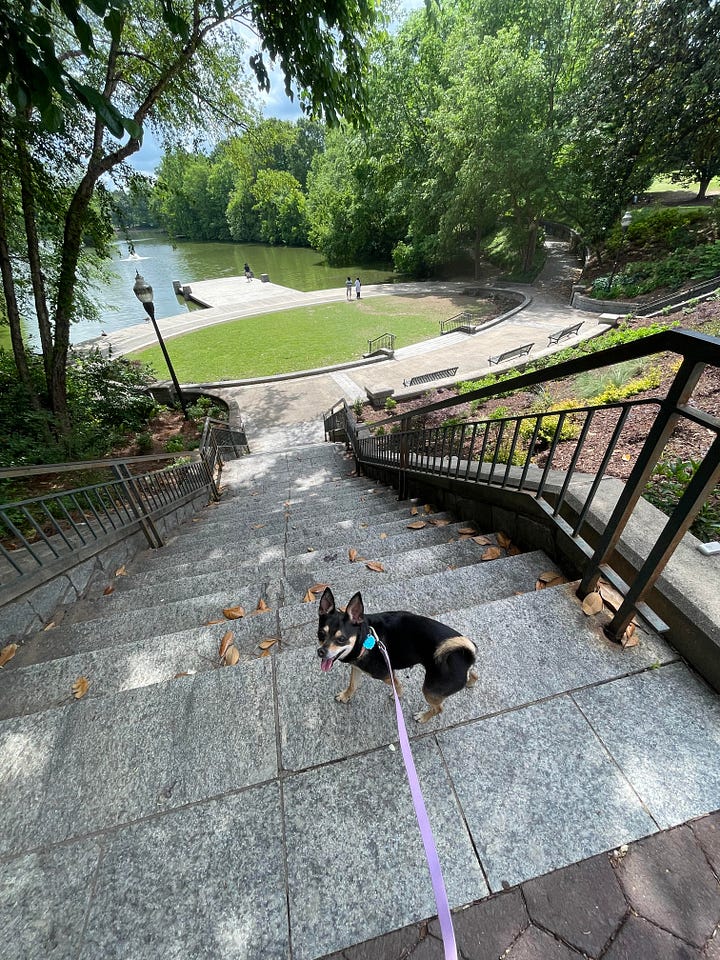
A few of my hobbies: baking and walking in parks Lean Into Support
You don’t have to carry it all alone. Support creates space for healing, perspective, and sustainable change.
Talk to a therapist, coach, or mentor about what you’re feeling.
Ask for help at home. Shared stress needs shared solutions.
Tell one person the truth about how you’re really doing this week.
Delegate one thing (personal or professional) that’s been weighing you down.
Final Thoughts: Your Mental Health Deserves Protection
Not every suggestion above will be realistic for every person. Therapy may be financially out of reach. Kids may limit your “me time” for hobbies. Your workplace might not allow long breaks away from your desk.
But the most powerful tool you always have is awareness. Burnout thrives in silence and denial. Noticing the symptoms, listening to your body, and adjusting early can save you from total collapse.
Let this post serve as your personal burnout prevention plan. You deserve to feel balanced, supported, and in control of your life again.
Please use the images below as a reminder to set boundaries and protect your peace:
